I’d like to introduce another “Gordon Ramsay” recipe. I believe he simply calls this one “Scrambled Eggs.” I decided to add the “with Mushroom & Tomato” because they really do play a part.
I want to tell you something – I put this recipe together yesterday as a nice Thanksgiving day breakfast and I swear, it was the best scrambled egg breakfast I’ve ever eaten in my life. It’s not complex at all, but there was something about how the flavors worked with one another. And the smooth richness of the eggs – unbelievable. And I’m not one to dramatize.
According to Gordon, there’s apparently the “correct” method of cooking scrambled eggs and then there’s all the rest. I’m not going to tell you that the way we’ve been doing this all along isn’t right, I’m merely going to suggest that after I upped my game yesterday, I won’t be going back. It’s that simple. He claims that upon the arrival of a new chef in one of his restaurants, he tests them with cooking eggs like this. They should know what they’re doing.
Ingredients
6 Large Eggs
4 Large White Mushrooms
4 Tomatoes on the Vine
1 Round Loaf of Sourdough Bread
Half Bunch Scallions
Salt
Pepper
1 Tablespoon Extra Virgin Olive Oil
1 Tablespoon Creme Fraiche (or sour cream)
1/4 Stick of Unsalted Butter
Questions
As I was watching Gordon go through this recipe, I asked myself a few questions. I’ll list them below. You may have the same ones.
1. What if I can’t find those small tomatoes on the vine that Gordon uses? Can I replace them with something else?
This was what happened to me. I tried and tried to locate some small (the size of half dollar around) tomatoes, but just couldn’t find any. I decided to pick up some larger tomatoes on the vine and cut them in quarters. I was concerned about how they would cook, but they were perfect. More on this below.
2. Gordon claims that hard sourdough bread is the way to go because the scrambled eggs won’t soak into it. I don’t have a local bakery that sells this type of bread. Can I substitute?
Yes. I purchased a round loaf of Portuguese bread, which was much softer than its sourdough counterpart. I think I may have preferred the soft over the hard. It cuts easier on the plate and I had no issues with sogginess. I think that decision was a success.
3. In Gordon’s recipe, he calls for chives, not scallions. Again, I can’t get fresh chives right now. How will scallions compare?
I think I’m going to simply substitute scallion for chives in all my recipes. I love scallions. They were perfect in this case and they are extremely tasty.
4. I thought you weren’t supposed to pan fry with extra virgin olive oil because of the low smoke point. Why does this recipe call for it?
The mushrooms and tomatoes are cooked on low. That temperature never reaches the smoke point of extra virgin olive oil. In this case, it’s the taste we’re after.
5. What’s crème fraiche? Can I just use sour cream?
I used sour cream in this recipe. There was no way for me to get my hands on creme fraiche and I needed to use something.
Step-by-Step Instructions
I’m going to cover all steps necessary to successfully complete this recipe. I’ll also offer some commentary to share my opinion of what’s going on.
Mushrooms & Tomatoes
Both of these ingredients are cooked slowly over low heat.
NOTE: If you’d like a larger view of any example image in this post, simply right click on it and choose “Open Image In New Tab.”
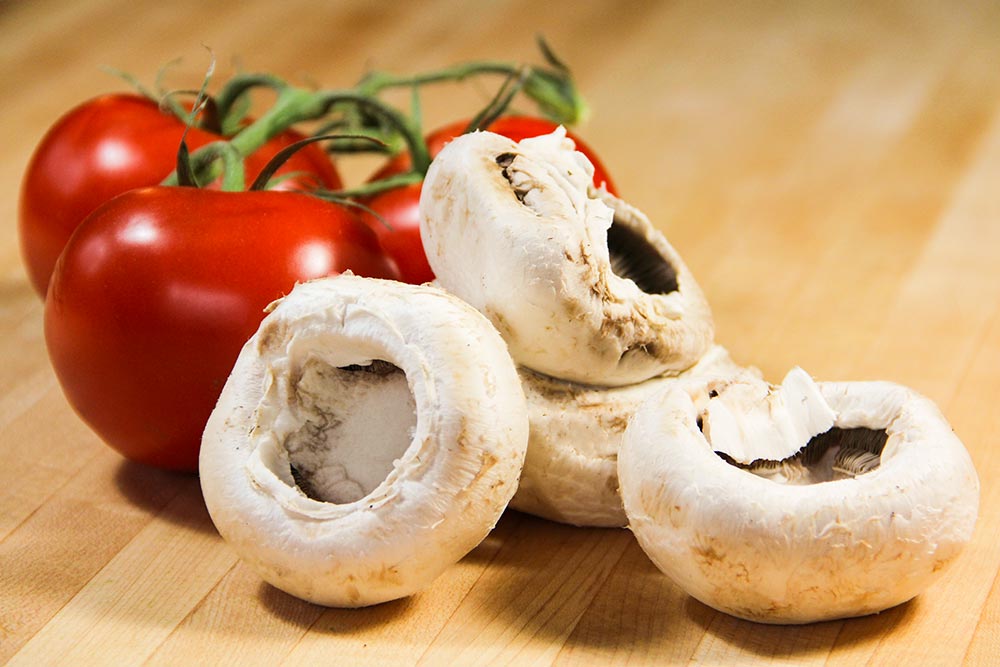
Before letting them go in the pan, I heated about a tablespoon of olive oil. I also quartered the tomatoes and removed the stems from the mushrooms. After cleaning everything, I put the ingredients in the pan to simmer throughout the rest of my cooking. I seasoned with a pinch of salt and a pinch of pepper. I’d say I let everything cook for about 5 minutes on one side and another 5 minutes on the other side.
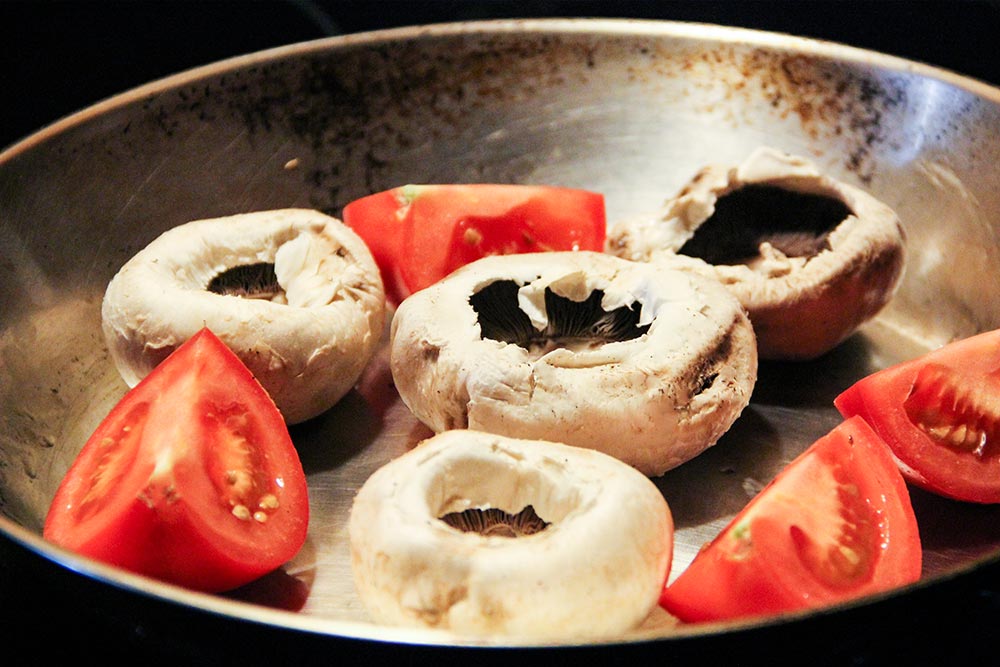
Cutting & Toasting the Bread
Like I mentioned above, since I couldn’t find any hard bread, I went with the soft. Here’s a photo of some very nice Portuguese bread:
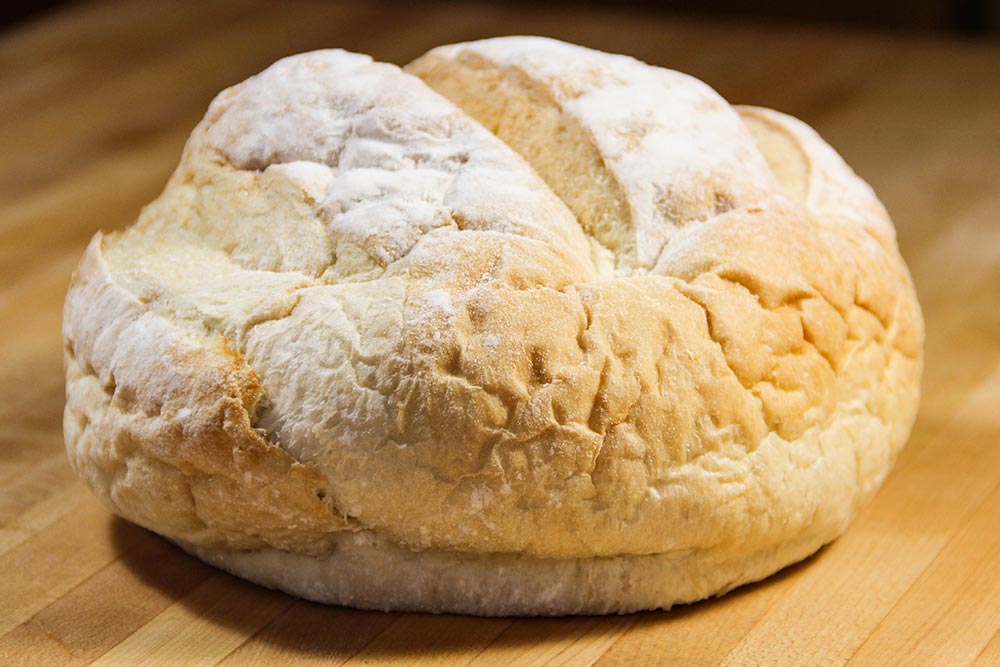
I cut two slices, each about three quarters of an inch thick.
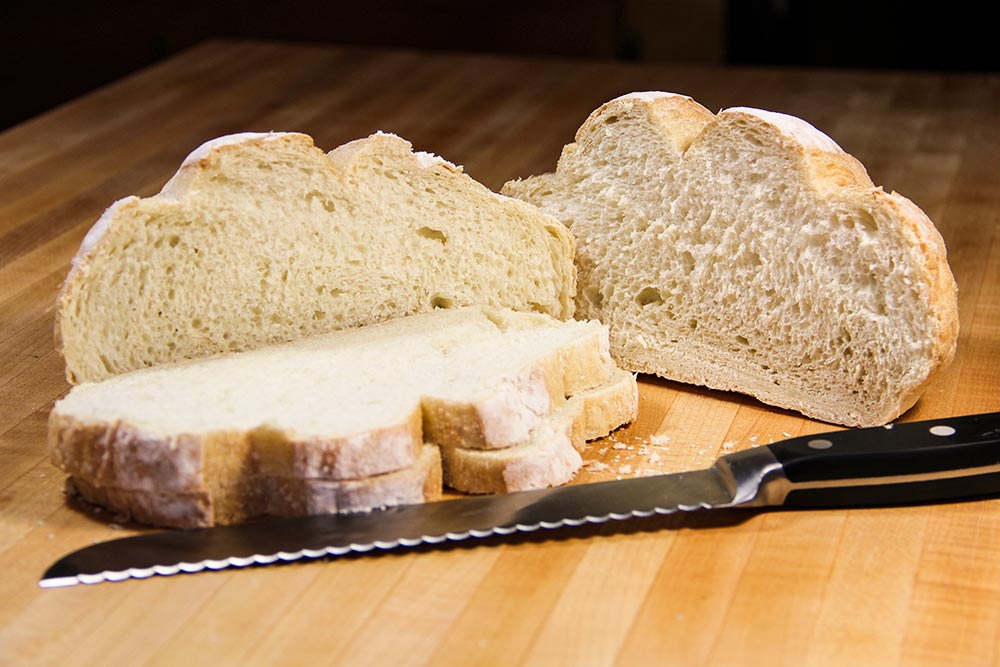
When I was finished with that, I placed them in the toasted for some light browning.
Scrambling & Cooking the Eggs
Obviously, this is the most important part of the post. This is where I’m going to attempt to describe the method of cooking scrambled eggs that I used.
First, I started with 6 large eggs.

I cracked the eggs and put them in a medium sized saucepan over medium heat. Since this recipe is for two, I added a quarter stick of butter. It’s important to add the butter at this point.

The goal of cooking these raw eggs is to end up with velvety smooth scrambled ones. This isn’t the method of breaking all the eggs into a bowl and mixing them quickly with a fork. With this method, you break the eggs directly into the saucepan and then gently mix them with a rubber spatula. The eggs are unseasoned (no salt) and the butter is unsalted as well. Gordon claims that adding salt too early will create a “watery” scrambled egg, which isn’t what we want.
As I began stirring the eggs with my spatula, the butter started to melt.

The best way to avoid burning the eggs and having them stick to the bottom of the pan too much is to stir over heat for about 30 seconds and then remove the pan from the heat and continue stirring for another 30 seconds. Continue this on and off sequence until the eggs are completely finished cooking.
In my case, I followed these instructions and the eggs came together nicely.
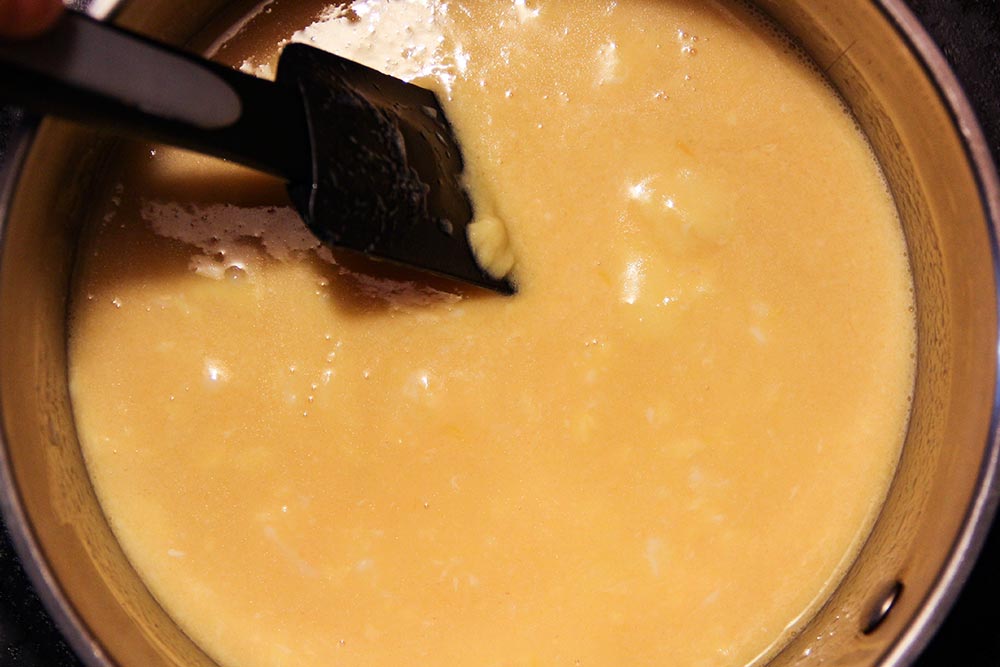
The next few photos show the progression of the eggs transforming into the kind of scrambled eggs we’re looking for.
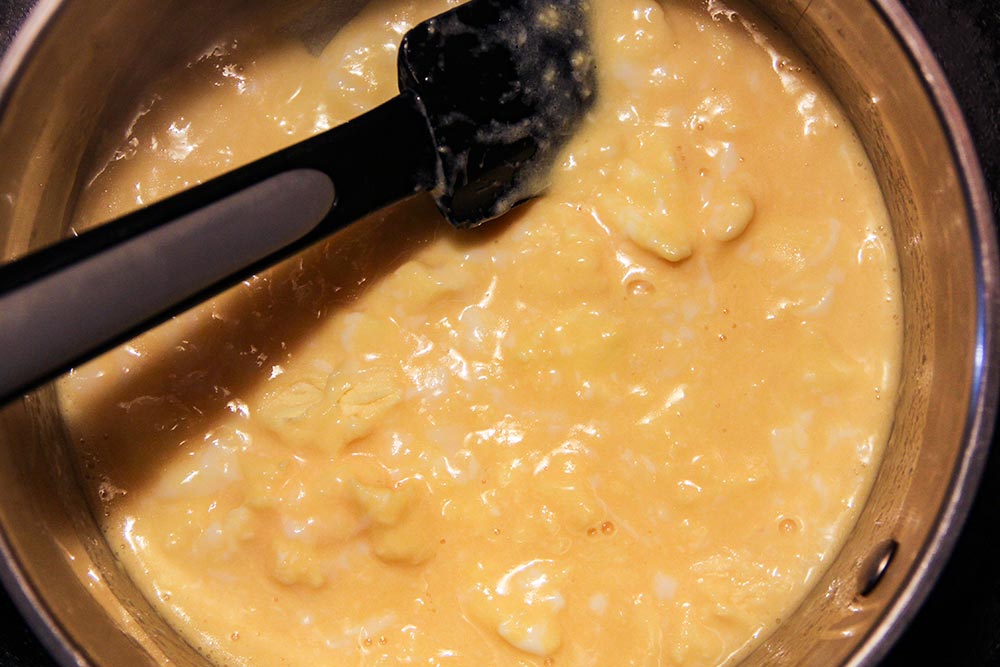

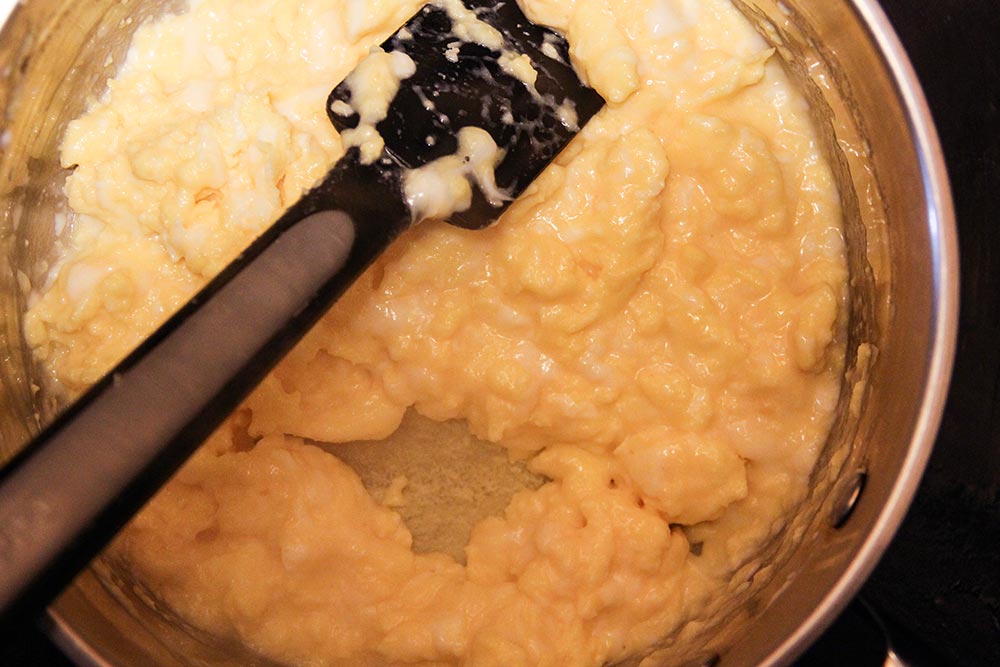
Now, at this point, even after we remove the pan from the heat, the eggs will continue to cook. This is because the bottom of the pan retains heat. We don’t want this to happen because they’re actually finished cooking. The way you see them in the above photo is what they’re supposed to look like. To add flavor and to cool the temperature of the eggs (stop the cooking), I added the one tablespoon of sour cream.
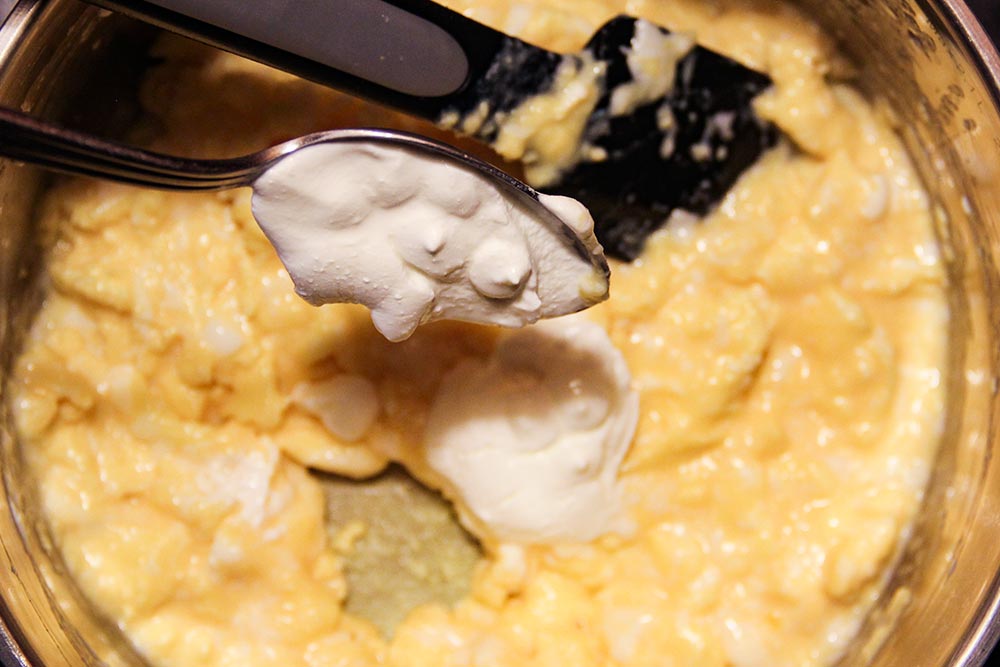
Right after that, I seasoned the eggs with salt and pepper. It’s okay to add the salt at this point because the eggs are finished cooking.

I stirred those ingredients in and then added the scallions that I had previously chopped on the bias.
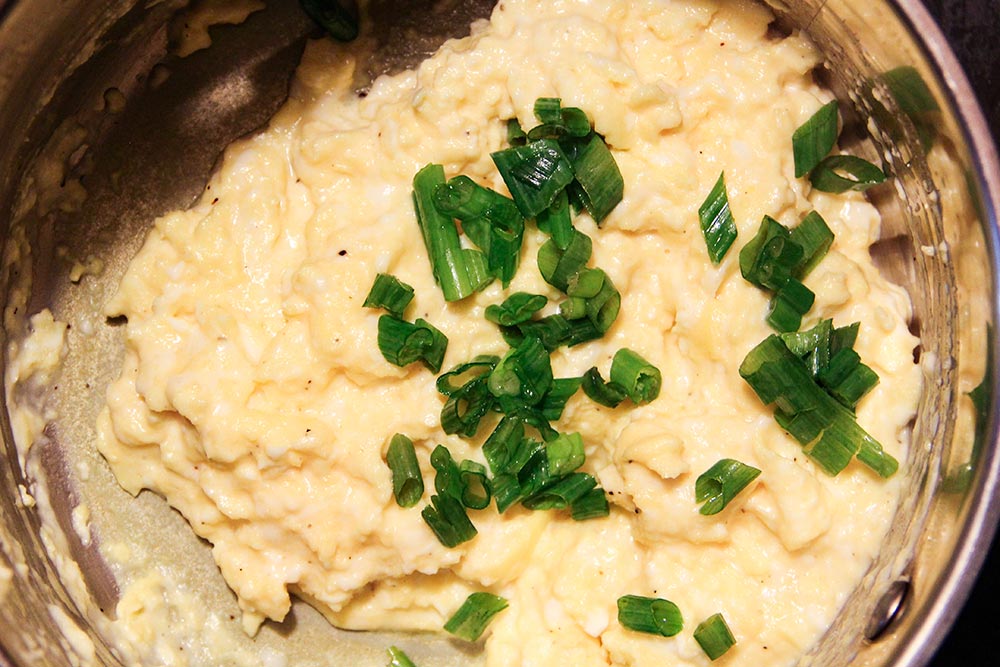
Remove the Mushrooms & Tomatoes From Heat
I hope you haven’t forgotten about the mushrooms and tomatoes. They weren’t on the heat for too long. Now, it’s time to take a look at them to see if they’re ready to remove from the heat.
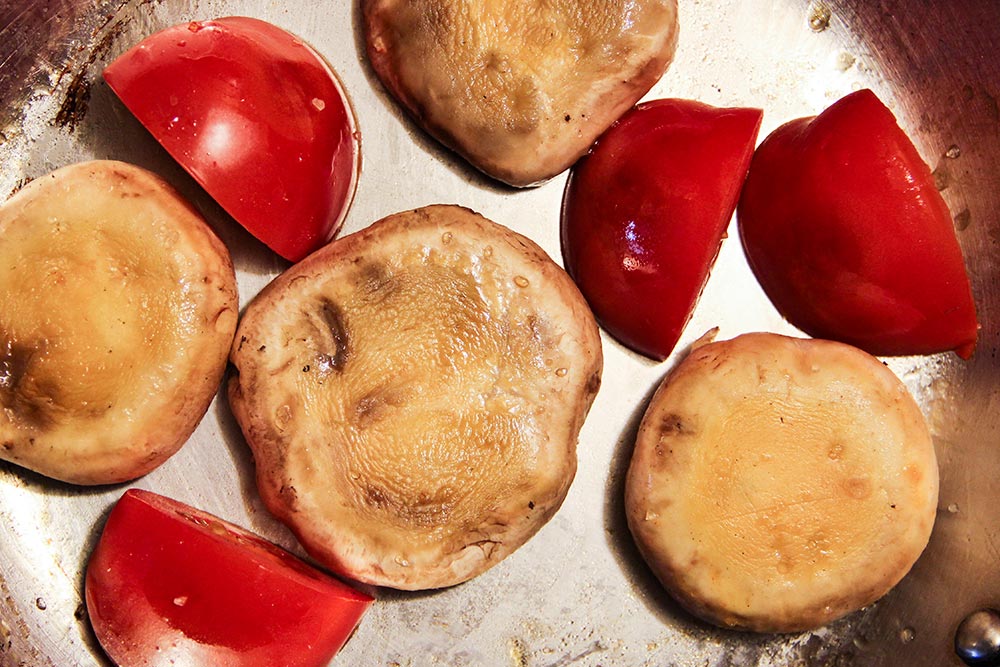
They look perfect so I begin plating.
Plating My Dish
The first thing I did when I plated this recipe was to place one piece of toast on each plate. Then, I drizzled some extra virgin olive oil directly onto the toast. Not a lot, just a drizzle to add flavor. After that, I topped the toast with the eggs. Once that section was ready, I placed two tomatoes and two mushroom caps on each plate and called it finished.
Final Dish
Here’s a photo of the final dish.
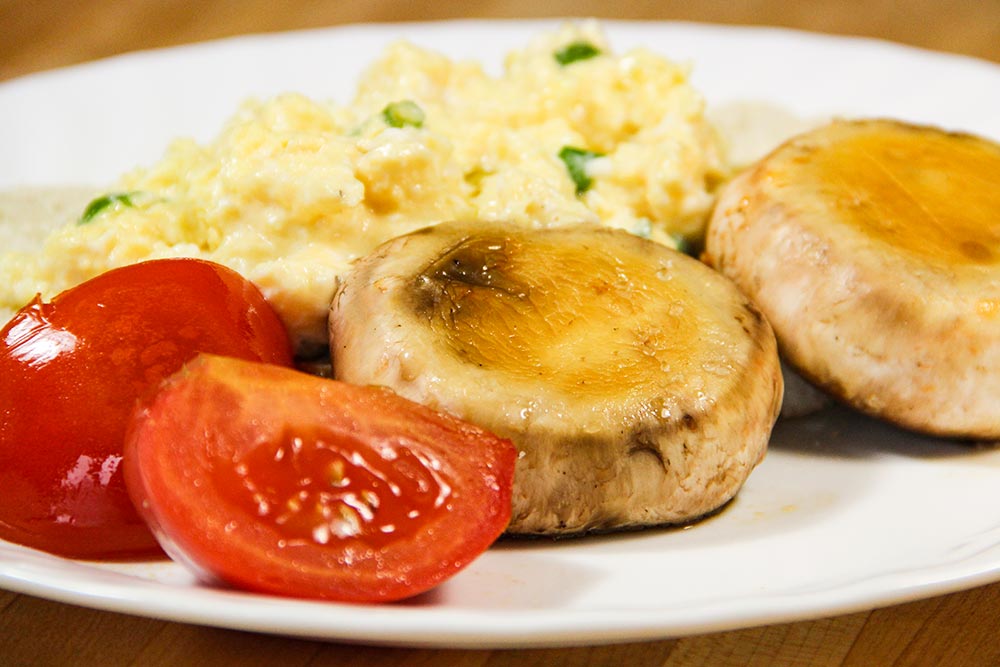
Again, I can’t begin to tell you how delicious this recipe was. I wish you’d take a stab at it and let me know what you thought via the comment area below.
If you’ve enjoyed today’s post and found it helpful, please share it with a friend. Thanks!

Leave a Reply